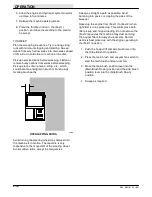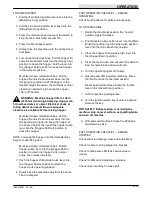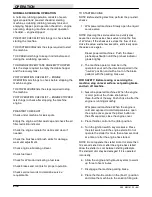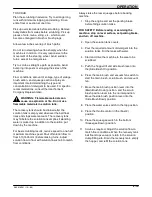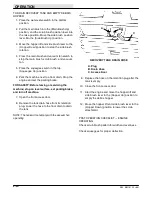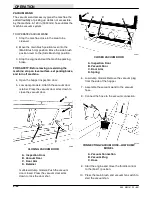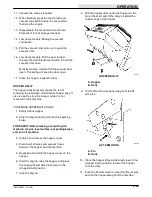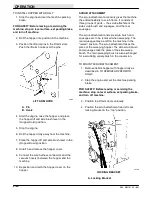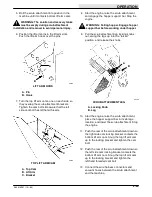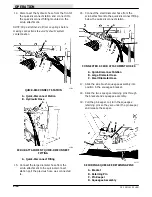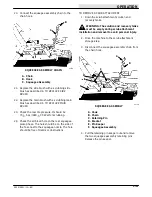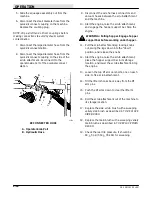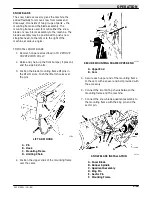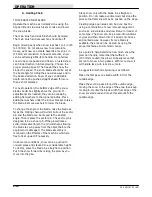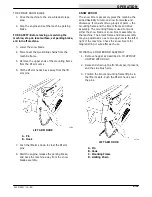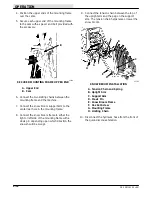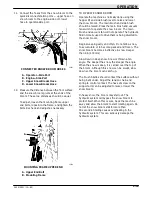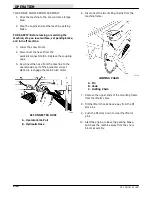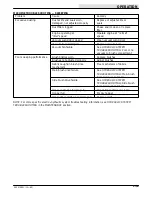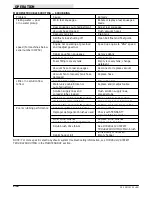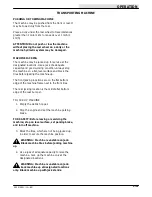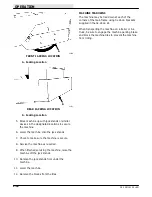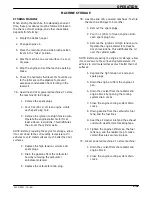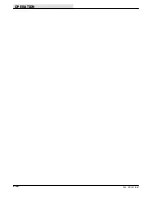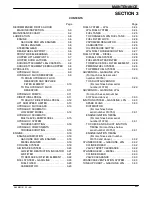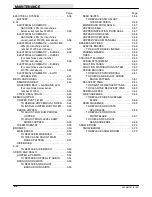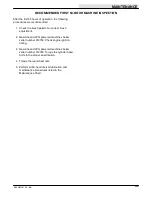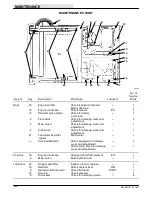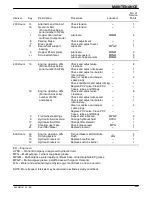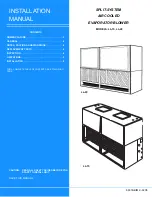
OPERATION
2-30
285 MM191 (12---89)
G. Limiting Chain
TO OPERATE SNOW BLADE
Operate the machine as normally done using the
hopper lift and side brush lever to raise and lower
the snow blade.
The main brush and side brush should be raised.
The main brush and vacuum fan should be off.
Begin plowing early when snow reaches 1 to 4 in (25
to 100 mm). Do not allow snow to accumulate.
Heavy, wet snow can create hazards at even a 1 in
(25 mm) accumulation. In heavier amounts, snow
can be extremely difficult to handle. Do not allow
snow to become packed and frozen. Crusted snow
can hinder traction in future plowing. Choose the
proper plowing speed. The heavier the snow, the
slower the speed. The snow blade should be set at
the best angle for rolling the snow sideways and in
the desired direction. Snow of any considerable
depth cannot be pushed straight ahead for more
than a short distance.
For best operation, the bottom edge of the snow
blade should be slightly above the ground. If
adjustments are needed, they can be made by
adding flat washers to the runner spindles. Place
additional washers under the runner bracket to raise
the blade. Remove washers to lower the blade.
To change the angle of the blade, raise the blade as
far as the limiting chain will permit. Pull out the sector
pin and the blade can be moved to the desired
angle. Then replace the sector pin. The sector pin is
designed to be a shear pin. If the plow strikes a
solid, immovable object, the pin will shear, allowing
the blade to swing away from the object before the
equipment is damaged. The blade assembly is
mounted on the lift arms of the machine which are
free to float upward if necessary.
Under some conditions, snow can be pushed to
unused areas and stacked to a considerable height.
To do this, place the blade in a straight-on position.
Push the snow forward by raising the plow as you
move into the pile.
Stack snow only with the blade in a straight-on
position. Do not create a vertical wall, but slope the
piles so that later snow may be pushed up the slope.
Clearing large open areas can be done best by
using a combination of snow removal equipment,
such as a snow blade and snow blower or loader of
some type. The snow can be plowed into windrows
or piles and then blown into or loaded onto trucks
and carried away. However, if only a blade is
available, the area can be cleared by using the
proper technique and common sense.
As a guide to help determine how much snow the
plow can handle, remember that with a 6 in
(150 mm) snowfall, the plow can easily move that
amount of snow in two passes. With more snow, it
will handle less; with less snow, more.
A suggested method of plowing is as follows:
Make the first pass one blade width in from the
outside edge.
Make the second pass around the outside edge,
moving the snow to the edge of the area, then keep
moving in. Double the blade width from edge of the
snow covered area and move this amount to the
outside edge.
Summary of Contents for 285
Page 1: ...r 285 Sweeper Scrubber ...
Page 6: ...ABOUT THIS MANUAL 285 MM191 12 89 d ...
Page 18: ...SPECIFICATIONS 285 MM191 12 89 1 2 ...
Page 22: ...SPECIFICATIONS 285 MM191 12 89 1 6 ...
Page 24: ...OPERATION 2 2 285 MM191 12 89 ...
Page 62: ...OPERATION 2 40 285 MM191 NIL ...
Page 76: ...MAINTENANCE 285 MM191 12 89 3 14 04644 HYDRAULIC SCHEMATIC LOW DUMP MODEL ...
Page 77: ...MAINTENANCE 3 15 285 MM191 12 89 04645 HYDRAULIC SCHEMATIC MULTI LEVEL DUMP MODEL ...
Page 103: ...MAINTENANCE 3 41 285 MM191 6 90 06187 ELECTRICAL SCHEMATIC AUTO SHAKER RFS ...
Page 104: ...MAINTENANCE 285 MM191 6 90 3 42 06187 ELECTRICAL SCHEMATIC AUTO SHAKER RFS ...
Page 134: ...APPENDIX 285 MM191 12 89 4 2 ...

